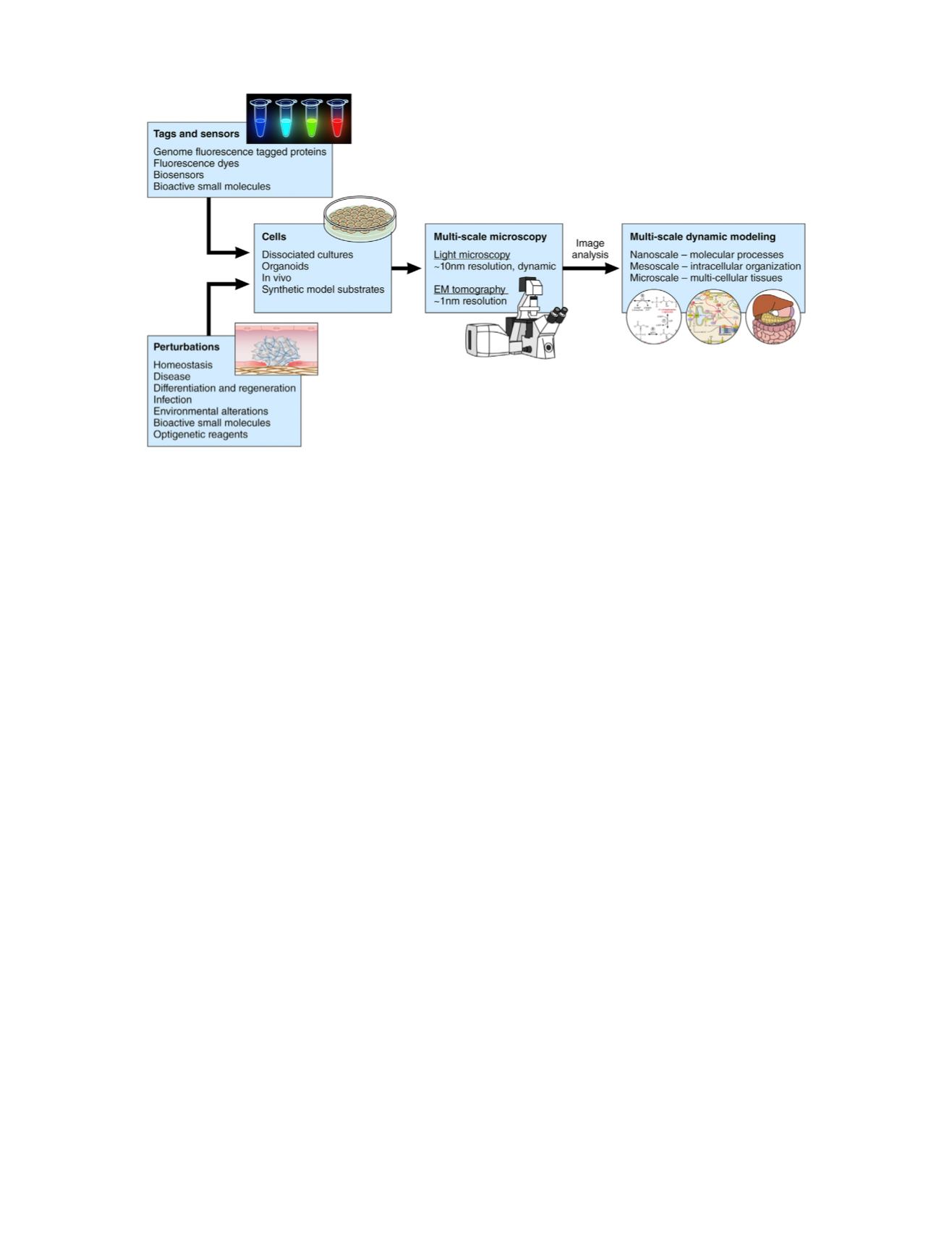

they differentiate into specialized cells and respond to ge-
netic and environmental alterations, including drug interven-
tion. Investigators could then combine these measurements
with other cellular data to develop computational models
that predict cellular states and behaviors during homeostasis,
regeneration, and disease.
To execute this program, the Institute will foster multidis-
ciplinary research, with a strong focus on physical methods
and approaches. This research will have a major biological
component that includes the processing, genome editing,
and differentiation of iPSCs. These cells will be used to un-
derstand different cell states and how these states change as
the cells execute their characteristic behaviors and respond
to different environments. The Institute will incorporate en-
gineering aspects by bringing its activities to large-scale,
automating, and integrating methodologies, and undertak-
ing systems-level approaches. Physical science approaches
will take center stage in the state-of-the-art microscopic
methods and biosensors that will be employed. Computa-
tional and mathematical modeling will benefit from theoret-
ical physics, computer science, and applied math and
engineering approaches, as both systems- and physicochem-
ical-level models will be employed. A novel product of the
project, an animated cell, will be a visual output designed to
integrate image data and existing structural data, and will
show the dynamic inner organization and workings of a
cell in unprecedented detail. It is also designed to integrate
quantitative data on subcellular structures that can be visu-
alized together, allowing the viewer to see, both en groupe
and selectively, the relative positions of cellular structures
and activities.
The Institute’s model for research is defined by attributes
that can be applied to similar ventures. These characteristics
include the use of large-scale and integrative approaches,
such as looking at effects on several cellular components
rather than a specialized one. The Institute will share data,
reagents, models, and tools openly with the community,
and will focus on interdisciplinary team science with clear
objectives and milestones.
Cellular biophysicists are working toward understanding
cells as individuals and collectives, and how this drives
tissue, organ, and organism functions. Such knowledge
would help satisfy our innate human curiosity about
how life works, and would also contribute significantly
to regenerative medicine and disease therapies by eluci-
dating tissue formation and identifying new therapeutic
targets.
Cellular biophysics also drives innovation and economic
growth. Efforts to understand the biology of the cell have
driven the development of new technologies, including
two-photon, confocal, light-sheet, and superresolution
microscopies. These technologies will greatly impact the
pharmaceutical industry by advancing drug discovery and
improving diagnostic methodologies. Finally, the ability to
model the cell and its regulatory pathways, connecting
genomic, epigenetic, environmental, and other data with
quantitative cellular data of the kind discussed here, holds
enormous predictive promise, leading to a computational
‘‘cell clinic’’ where one can query what the effects of
different alterations will be on cell and tissue function,
building on the premise that most disease originates from
alterations in cell function.
ACKNOWLEDGMENTS
The author thanks Paul Allen for his vision and support.
FIGURE 1 A systems approach to meso- and nanoscale imaging and modeling. To see this figure in color, go online.
Biophysical Journal 110(5) 993–996
Cellular Biophysics
995


















